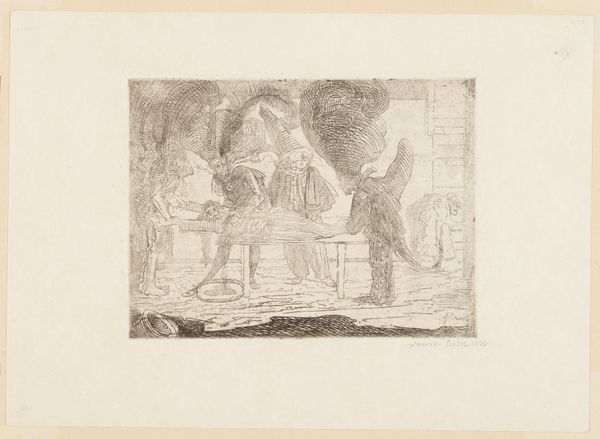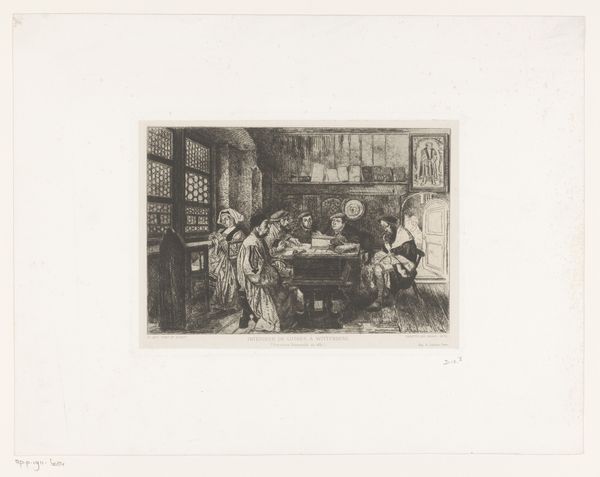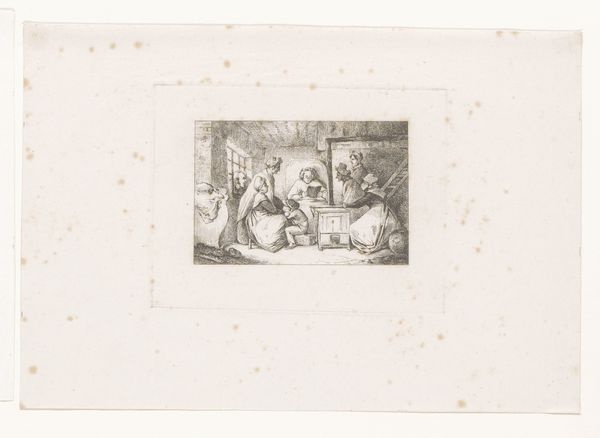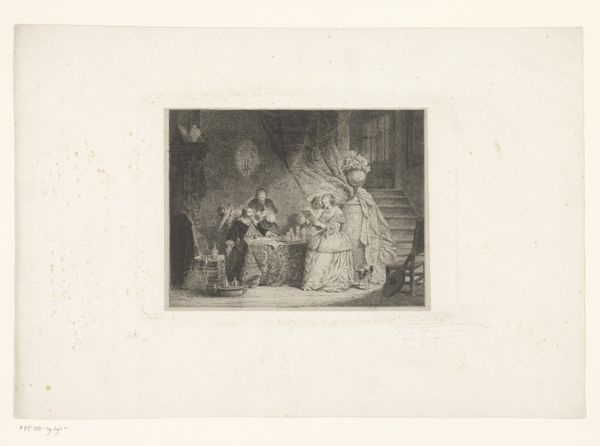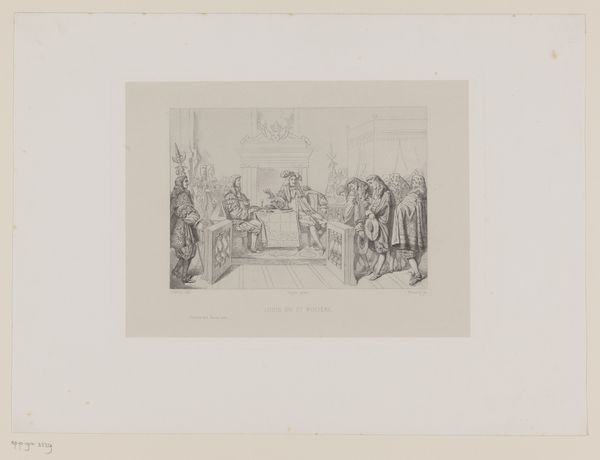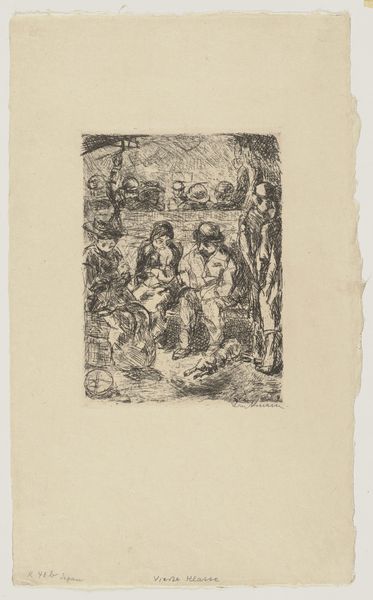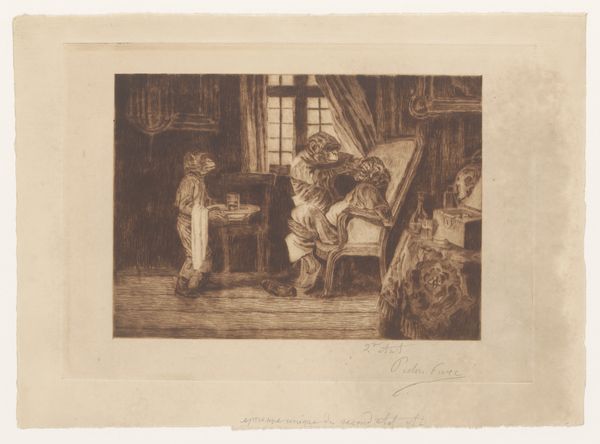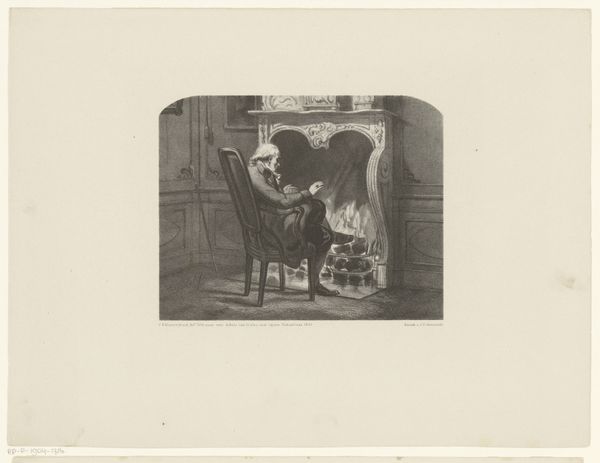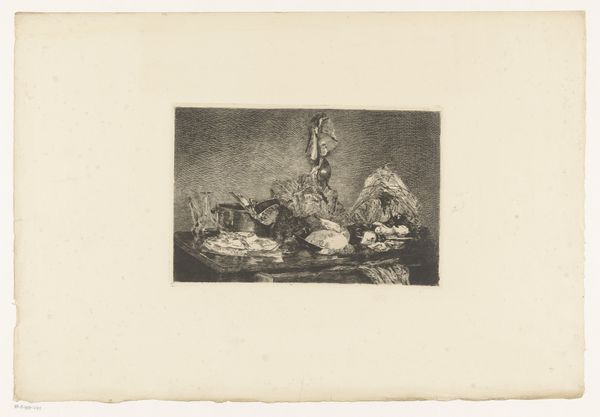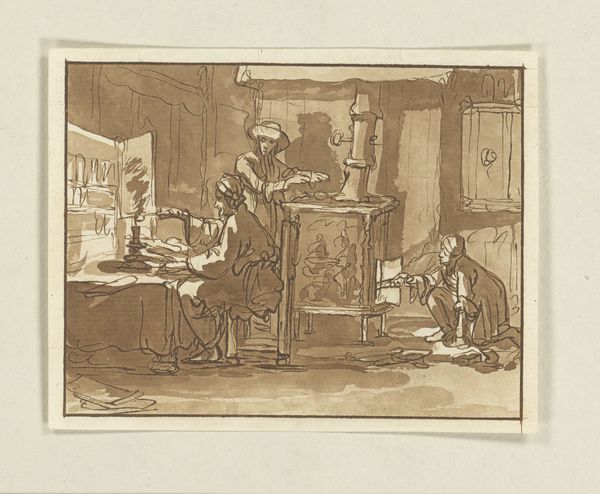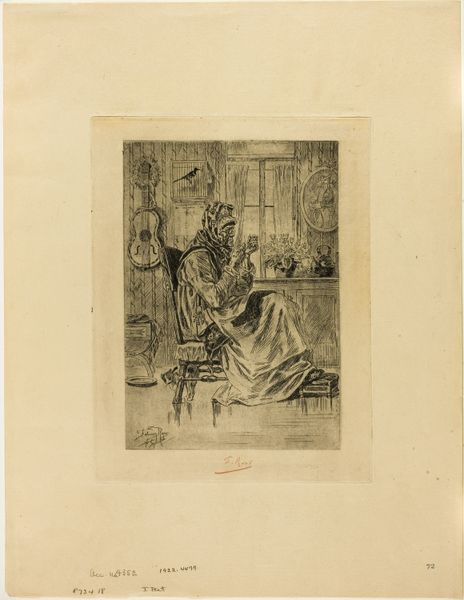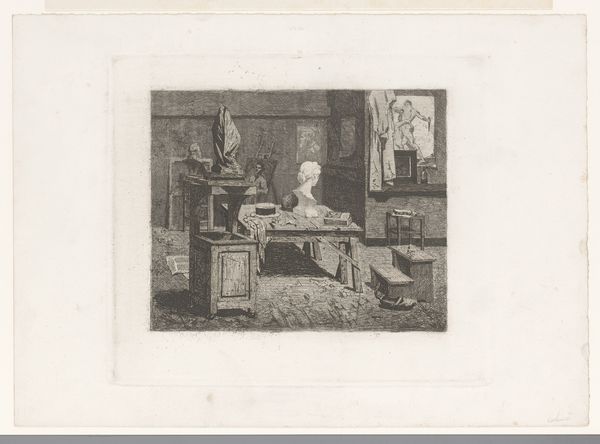
drawing, print, etching, ink
#
drawing
#
medieval
# print
#
etching
#
ink
#
genre-painting
Dimensions: height 109 mm, width 157 mm
Copyright: Rijks Museum: Open Domain
Editor: This is "Winkel van een middeleeuwse zilversmid," created between 1864 and 1909 by Jean-Baptiste Anthony. It's an etching, a print using ink on paper. It depicts a medieval silversmith's workshop. I'm struck by how the artist created so much detail using what looks like a limited tonal range. How do you interpret this depiction of a medieval shop in the late 19th century? Curator: That's a great observation. It’s tempting to see this image through the lens of 19th-century Romanticism, a time when the Middle Ages were often idealized. But it also suggests a yearning for an era perceived as more authentic or handcrafted compared to the industrialized world. The revival of interest in medieval aesthetics appears in art and architecture, too. Why do you think artists returned to the past for inspiration? Editor: Maybe they were responding to social and economic changes? Rapid industrialization must have had a huge impact, making people yearn for something different, for simpler times. Curator: Exactly. Images like these served as a cultural anchor. Look at how the artist carefully renders the textures and the arrangement of tools; do these objects look useful or symbolic? Editor: Hmm… a bit of both? The detail suggests real labor, yet there’s also a deliberate composition, idealizing daily life rather than realistically portraying it. Curator: It's the construction of the medieval imagery that mattered, offering a commentary on the rapidly changing world. Artists and their patrons could publicly engage with a historical ideal, showing their audience a romanticised vision of what life may have been like. It's as much about the 19th century as it is about the Middle Ages. Editor: That reframes the work entirely for me! I was so focused on the 'medieval' part that I neglected its modern message. Thank you for pointing that out. Curator: My pleasure. Thinking about the historical context always gives us a deeper perspective on how and why art is created and consumed.
Comments
No comments
Be the first to comment and join the conversation on the ultimate creative platform.
